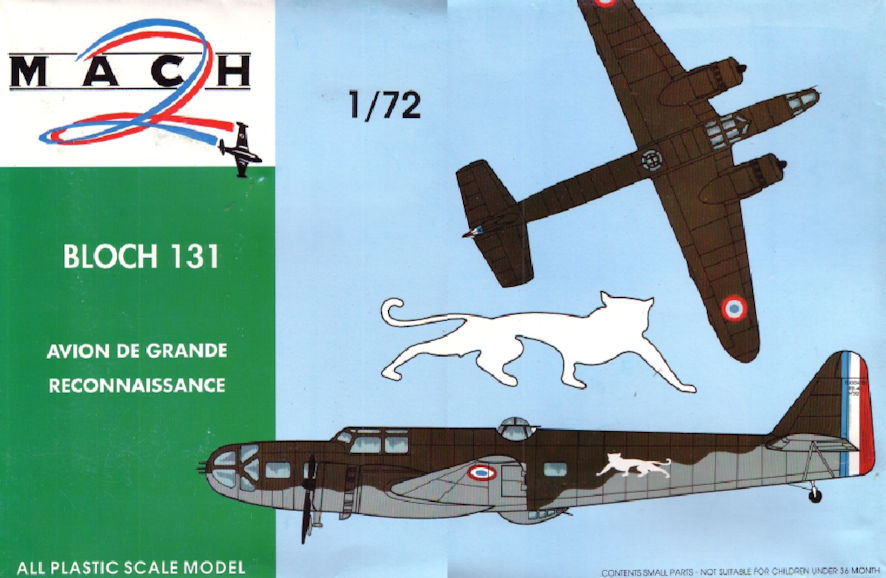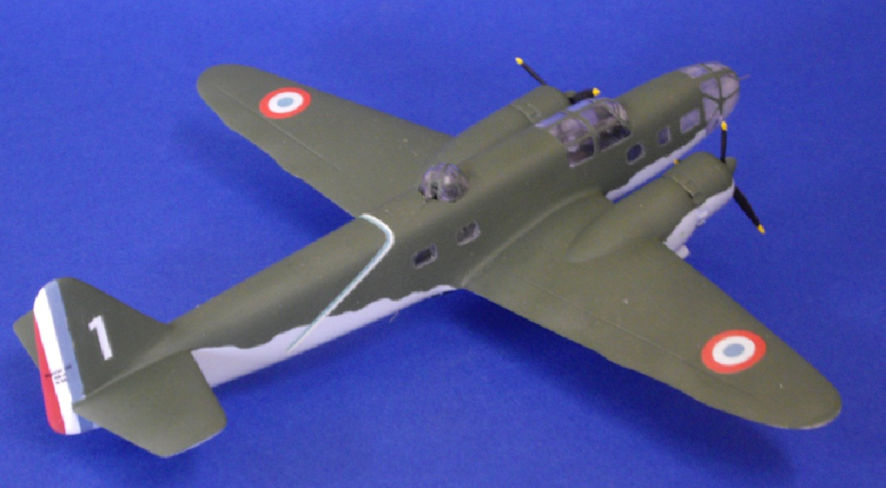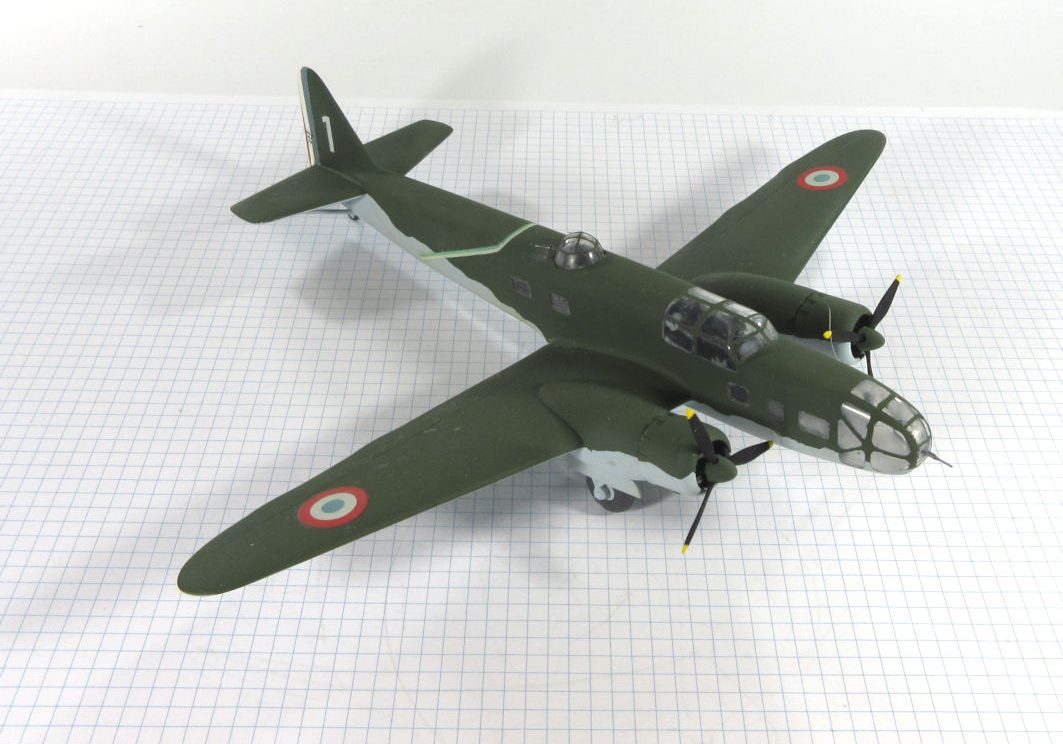This aeroplane was one of those that gave thee Armee de l’Air the bad reputation it had at the end of the Battle of France. It had been designed in the early 1930s as a multi-role aeroplane to fill reconnaissance and bombing roles and went on to equip seven reconnaissance groups at the beginning of World War II. It’s performance had always been ordinary but losses from daylight operations early in the war were so heavy that it was relegated to a night bombing role, in which it still suffered badly. After the Armistice some Block 131s were converted to become target tugs in the Vichy air force and the Luftwaffe apparently flew a few. Goodness knows why, this seems to have been a very forgettable aeroplane.

As usual with Mach 2 kits, this one was something of a challenge. My approach to Mach 2 kits is to do a little bit of work on it at a time to overcome the challenges they present in small steps so that the initial shock of beholding the contents of the box is not overwhelming. In truth, Mach 2 is no better or worse than many other limited run injection moulded kit companies (the British Pegasus company comes to mind) but Monsieur Mach 2 has a better sense of what modellers want to make than most and so we seem to buy more of his product. There is also the fact that he is not afraid to make big kits that the larger manufacturers steer clear of (I’m quite enjoying his Caravelle that is nearing completion and may one day get his newly released Viscount 700).
Apart from the usual careful tidying up of the small parts that goes with most kits of this type, there were no major difficulties. Unlike our august colleague who throws away all the tiny bits of most Mach 2 kits, I couldn’t do that with this Bloch 131 kit because there are no alternatives out there in the form of similar kits or after-market parts. There were, of course, moments when I would not have minded using alternatives, if they had existed. For example, when it came to some parts such as wheels and radial engines the adjective ‘round’ was not the first one that came to mind in describing them. On the other hand, the internal furnishings were quite adequate, especially when painted French interior blue/black.
There were some problems during construction in getting things to fit and to keep the whole model square. However, since nobody who reads this is likely to ever make this model from this kit, it is hardly worth taking up your time on such details. A general word of advice is to look at as many photos as possible and always check to see that the way in which parts fit actually leads to something that looks like an airworthy aeroplane.
The biggest conundrum was in the colours and markings. The box top makes some suggestions, a long review article on the www suggested a tan interior and brown exterior while the highly useful French Aircraft From 1939 to 1942 gives several options. I eventually decided on one of the aeroplanes illustrated there, using decals from anywhere but the kit.
In conclusion, I’ve made worse.

Leigh Edmonds
August 2008
